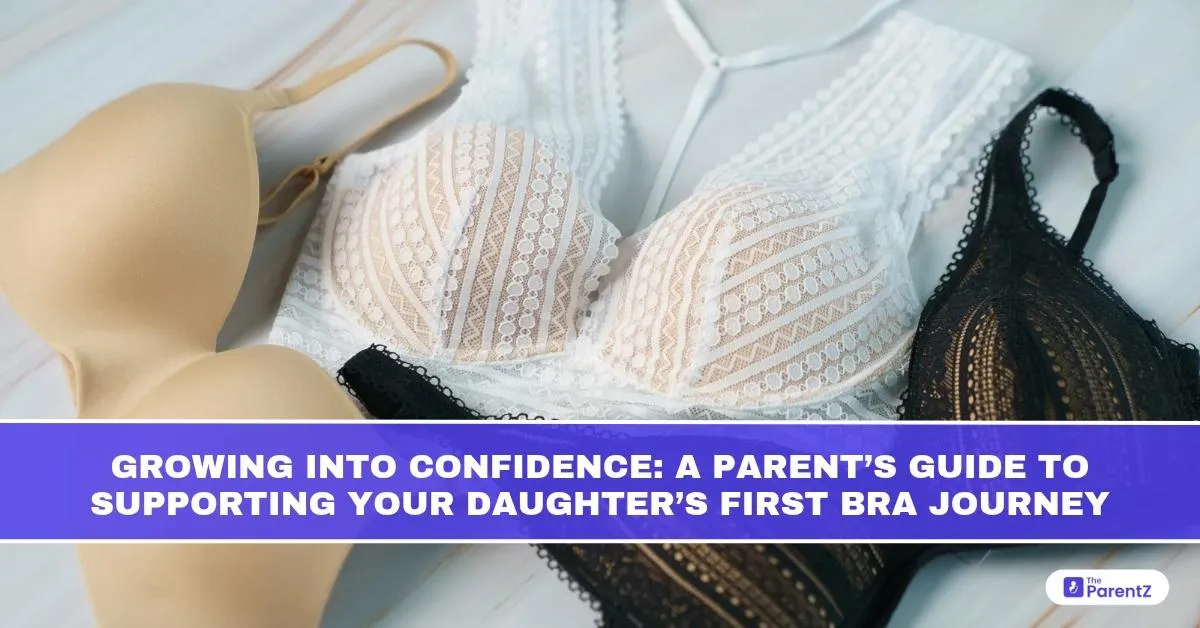The First Step: Not Just a Piece of Cloth
Shruti was twelve when her mother noticed her slightly hunched posture and the way she’d started pulling at her school shirt more often. During a regular evening walk, her mother gently asked, “Do your clothes feel tight around your chest?” Shruti nodded, eyes lowered. That was the beginning, not of buying a bra, but of opening a doorway to confidence, comfort, and growing up.
Many parents, especially in India, find themselves unsure about how and when to bring up the topic of wearing a bra. The transition into adolescence is delicate, filled with physical changes, emotional vulnerability, and the need for sensitive support.
This guide explains when, why, and how to gently introduce your daughter to her first bra, combining parenting insights with clear medical understanding.
Understanding Puberty: What’s Happening in Her Body
Puberty in girls typically begins between the ages 8 and 13, as per the Indian Academy of Pediatrics. One of the earliest signs is the development of breast tissue, known as thelarche. This is triggered by hormonal changes, particularly rising estrogen levels.
According to the NHS and American Academy of Pediatrics, breast buds (small, firm lumps under the nipple) often appear first. This can be accompanied by tenderness, swelling, and a change in how clothes fit. Girls may feel self-conscious, especially in school uniforms or fitted clothes. These changes are normal and healthy, but they also mark a time when your daughter needs emotional reassurance and appropriate physical support, namely, a well-fitting starter bra.
Why the First Bra Matters: More Than Just Support
Wearing a bra at the right time is about much more than modesty. It has tangible benefits:
1. Physical Comfort
As breast tissue develops, sensitivity increases. A soft, non-padded training bra helps minimize discomfort during everyday activities, especially sports and school-related physical movement.
2. Postural Support
While breast tissue is still developing and not heavy, even a small amount of support can encourage upright posture and prevent unnecessary slouching caused by self-consciousness or physical discomfort.
3. Emotional Confidence
Studies published in adolescent health journals highlight that girls who feel in control of their physical changes tend to navigate puberty with higher self-esteem. Wearing a bra at the right time can provide a sense of privacy, personal care, and maturity.
4. Preventing Skin Irritation
Sweat accumulation around the developing breast area, especially in hot and humid climates like India’s, can lead to irritation or fungal infections. Breathable cotton bras help keep the skin dry and clean.
When Is the Right Time? Clues to Look For
There is no one-size-fits-all age. Instead, look for these signs:
- Noticeable breast buds or swelling under the nipples
- Tenderness or complaints of chest discomfort
- Self-consciousness in front of mirrors or while dressing
- Pulling at clothing or changing how they wear school uniforms
- Asking subtle questions like, “When did you start wearing a bra?”
Each child is different. Some may need their first bra at 9, others at 13. The right time is when their body and comfort signals it.
Choosing the Right First Bra: Comfort Over Style
Start simple. Avoid underwires, padding, or anything with complex straps. Key features to look for:
- Soft cotton fabric: Breathable and gentle on sensitive skin
- No padding or wires: Unnecessary for early development and may cause discomfort
- Wide straps: Reduce pressure on shoulders and offer better support
- Easy hooks or slip-ons: Slip-on styles often feel less intimidating
- Right fit: Not too tight; should sit flat against the skin without leaving marks
It’s important to involve your daughter in the selection process. Let her try different styles in a private, non-judgmental space. Explain how a bra should feel: not tight, not loose, just comfortably snug.
Talking About It: Dos and Don’ts for Parents
This isn’t just a wardrobe change, it’s a life milestone. Here’s how you can make it a smooth emotional journey too:
- Do keep the tone normal. Treat it as part of growing up, not as something to feel embarrassed about.
- Don’t bring it up in public or tease. Privacy and dignity are key at this stage.
- Do share your own story. This builds trust and normalizes the transition.
- Don’t push before she’s ready. If she resists, give her time and revisit the conversation later.
- Do answer her questions honestly. Even if it’s just, “Why do I need a bra now?”
Cultural Sensitivity in Indian Homes
In many Indian households, these conversations are still shrouded in awkwardness or avoided altogether. But ignoring your daughter’s developmental needs can lead to long-term insecurities.
Encourage openness by normalizing body changes early, ideally from age 8 or 9. If fathers or male guardians are involved in daily caregiving, it’s important they also understand how to respectfully support this phase, perhaps by offering quiet backing or coordinating with a female caregiver.
What to Avoid
- Padded, push-up, or fancy fashion bras at this stage. These are not suitable for growing bodies and send the wrong message about body image.
- Buying bras without her input. It’s not just about size, it’s about comfort, ownership, and confidence.
- Assuming all kids need the same style or size. Everybody is unique. Get measured if unsure, and revisit sizing every 6–12 months.
Medical Insight: When to See a Doctor
While most breast development patterns are normal, see a pediatrician or gynecologist if you notice:
- One breast developing significantly faster than the other
- Pain that disrupts daily activities
- Early development before age 8 (precocious puberty)
- No signs of breast development by age 14
A Final Word to Parents
Introducing your daughter to her first bra isn’t just about fabric and fit; it’s about teaching self-care, building trust, and supporting her evolving identity. This journey is your opportunity to empower her with body awareness and emotional readiness for the changes ahead. By offering her the right support at the right time, you’re not just buying a piece of clothing. You’re nurturing a sense of ownership over her body and pride in who she is becoming.








Be the first one to comment on this story.